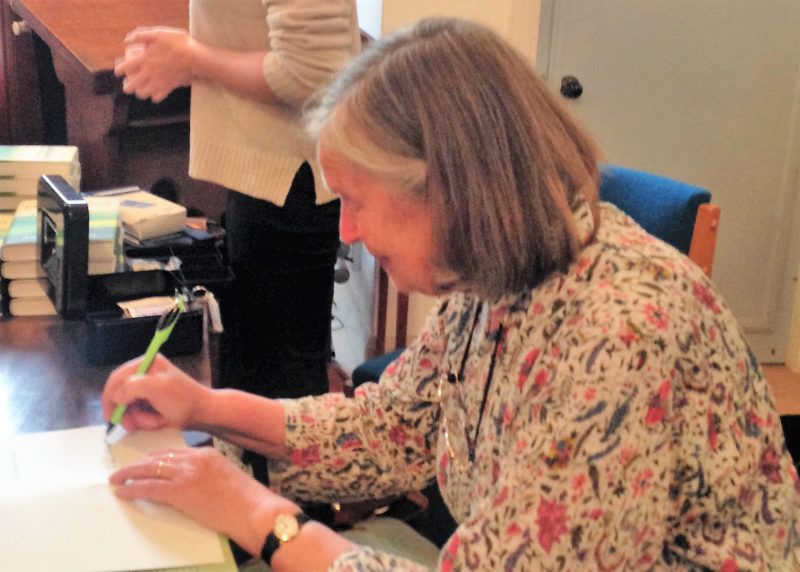Anna Pavord came to speak at the Rye Arts Festival on Sunday September 18, presenting her latest book, “Landskipping” (2016), to a full house in the Methodist Church. Pavord is very well known for her gardening books, amongst them ‘The Tulip: (1999), The Story of the Flower That Has Made Men Mad’, to give it its full title, which is perhaps the best known, followed a close second by “The Curious Gardener”(2010), with a chapter from each month of the year drawn from her articles in the Independent.
Pavord is still gardening correspondent for the Independent and worked for the Observer for 20 years. She is an associate editor of Gardens Illustrated’ and has made numerous contributions to other publications, including Elle Decoration and Country Life. She lives in West Dorset and has been making a new garden at her home there, which she has designed with the landscape surrounding very much in mind. She described herself as “Westcentric”, as she has lived in Dorset for so many years and brought up her family there. “Rye is another world”, she said.
She herself was actually born and brought up in Welsh border country, in an area dominated by a “mountain” known as “the Sugar Loaf”, and the surrounding countryside has always been in her thoughts and memories, the association of parts of the landscape with events in her own life. It was this that led her to explore the relationship between the British and their landscapes.
‘Landskipping, Painters Ploughmen and Places’ is her latest publication. Pavord described it as having three main themes, prospects and painters, prospects and the plough and prospects and people. The book was not commissioned, but written because of her own fascination with landscape, painters, improvers and those who live in it. It readily found a publisher and she was able to describe why this was so, as she took her listeners through the main themes of the book in an articulate and enjoyable way.
The audience heard of the development of landscape as an acceptable topic for 18th century painters, moving from the bottom of the scale, along with dogs, to the top, to be admired alongside depictions of Greek gods and goddesses! Illustrating her talk with excellent pictures, she took her hearers through the development of tourism and the idea that there was only one set way to look at a view, and that these were either Sublime, encompassing a pleasurable sensation of terror without humanity, or merely Beautiful, where the prospect was pleasant and calm. This led on to the development of the guide book, the precursor to “Rough Guides” perhaps, telling the traveller exactly what they should be looking at and admiring. Hopefully more latitude than this is acceptable today!
She then moved on to explain how the landscape was altered by the agricultural improvers and reformers and how industry started to make an impact that lasts until now. This included the awful situation of the agricultural labourers, with their picturesque, but dirty, freezing and insanitary living conditions. and some of the efforts made to improve their situation.
This brought her talk to the third theme, of people and places, Pavord asking why certain landscapes call out to us. Are we “imprinted” in some way, as Pavord feels she is by the North Wales countryside. To quote her, “With landscape, you first need to be hooked, then later, you engage with the place on your own terms”.
Altogether, a fascinating person and an inspiring book.
References: Landskipping : Bloomsbury Publishing 2016 ISBN 9781408868911. Available from The Rye Bookshop, price £20, The Tulip: Bloomsbury Publishing 1999 ISBN 15823401335. The Curious Gardener: Bloomsbury Publishing 2011 ISBN 1408817616
Photo: Gillian Roder



